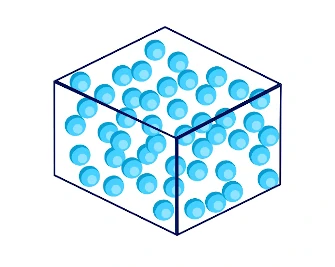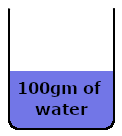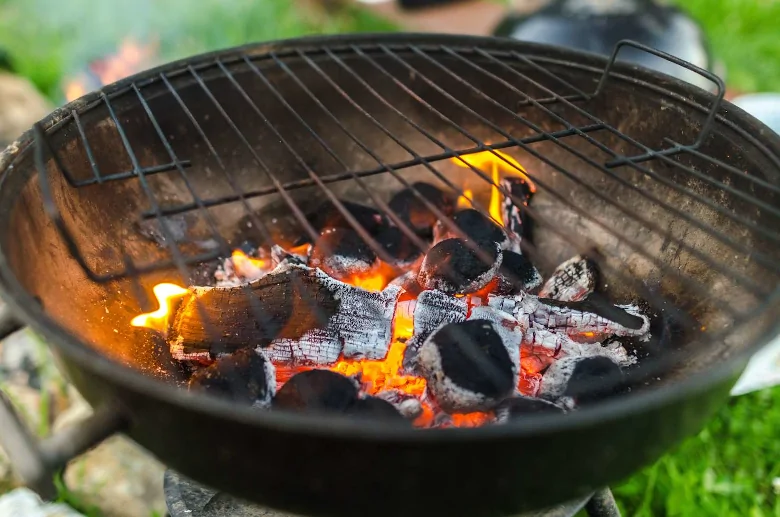Thermal Properties Of Matter
In this article, we are going to learn about the Thermal Properties of Matter. We will cover the following subtopics in this article:
- Internal Energy
- Heat Capacity
- Specific Heat Capacity
- Heat = mass × specific heat capacity × temperature change
Internal Energy
The Kinetic Model of Matter states that all matter is made up of particles in constant random motion.

The temperature of a substance is directly proportional to the average kinetic energy of its particles (that made up the substance).
Heat Capacity
Heat capacity is the amount of thermal energy required to raise the temperature of a substance by 1 K or 1ºC.
\(\displaystyle{C = \frac {Q}{∆θ}}\)
Where \(\displaystyle{C}\) is the Heat Capacity;
\(\displaystyle{Q}\) is the Thermal Energy in joules (J);
\(\displaystyle{∆θ}\) is the change in temperature in (K or ºC).
The SI unit of Heat Capacity C is J K⁻¹
Another common unit is J ºC⁻¹
The factors that affect heat capacity C are:
- The type of material
- The amount (mass) of substance
Specific Heat Capacity
Specific heat capacity c is the amount of thermal energy required to raise the temperature of a unit mass (e.g. 1 kg) of a substance by 1 K (or 1°C).
\(\begin{align*} \displaystyle c &= \frac {C}{m}\\[2ex] &= \frac {Q}{m∆θ} \end{align*}\)
where,
Q (J) = thermal energy required
Δθ (K or °C) = change in temperature
m (kg) = mass of substance
The SI unit of c is J kg⁻¹ K⁻¹.
Another common unit of c is J kg⁻¹ °C⁻¹.
Heat capacity and specific heat capacity

Given that the thermal energy needed for 100 g of water to increase its temperature by 1°C is 420 J.
Heat Capacity = 420 J
Specific heat capacity
= \(\displaystyle{\frac {\;C\;}{\;m\;}}\)
= 420 J °C⁻¹ ÷ 100 g
= 4.2 J °C–1g–1
Or
Specific heat capacity c
= \(\displaystyle{\frac {420}{0.1}}\)
= 4200 J K⁻¹ kg⁻¹
Example 1:
Determine the quantity of heat required to raise the temperature of 100 g of ice from −20°C to −5°C.
The specific heat capacity of ice is 2000 J kg⁻¹ K⁻¹.
Solution:
Δθ = −5°C − (−20°C)
= 15°C
Q = mcΔθ
= 0.1 kg × 2000 J kg⁻¹ K⁻¹ × 15°C
= 3000 J
Example 2:
Determine the specific heat capacity of aluminium, given that a heater rated 30 W takes 5 min to raise the temperature of 450 g of aluminium from 27°C to 50°C.
Solution:
Δθ = 50°C − 27°C
= 23°C
Work done, Energy = Power × Time
P × t = mcΔθ
30 W × 5 × 60 s = 0.45 kg × c × 23°C
c = 870 J kg⁻¹ °C
Example 3:
A piece of hot coal of mass 50 g is at a temperature of 200°C. It is dropped into 150 g of water at a temperature of 25°C. Determine the final temperature reached, assuming negligible heat loss to the surroundings. (The specific heat capacity of coal and water are 710 J kg⁻¹ K⁻¹ and 4200 J kg⁻¹ K⁻¹ respectively.)
Solution:
Thermal energy is transferred from the hot coal to the cooler water.
Let the final temperature be θ.
By the principle of conservation of energy,
Thermal energy lost by coal = Thermal energy gained by water
mcccΔθc = mwcwΔθw
0.05 × 710 × (200 − θ) = 0.15 × 4200 × (θ − 25)
7100 − 35.5θ = 630θ − 15 750
594.5θ = 22 850
θ = 38.4°C
Practice Questions
Question 1:
A heater rated 25 W takes 3 min to raise the temperature of 65 g of aluminium from - 27°C to - 1°C. Calculate the specific heat capacity of ice. So,
Solution:
Δθ = - 1°C − (− 27)°C
= 26°C
So,
P × t = mcΔθ
25 W × 3 × 60 s = 0.065 kg × c × 26°C
c = 2663 J kg⁻¹ °C⁻¹
Question 2:
Some steel balls of total mass of 150g at a temperature of 0°C are dropped into 200g of boiling water at a temperature of 100°C.
(The specific heat capacity of steel is 420 J kg\(^{-1}\)°C\(^{-1}\) and water is 4200 J kg\(^{-1}\)°C\(^{-1}\).)
What is the final temperature of a mixture at equilibrium?
Solution:
Thermal energy is transferred from the boiling water to the steel balls.
Let the final temperature be \(\theta\).
By the Principle of Conservation of Energy,
Thermal energy lost by water = thermal energy gained by steel balls.
\(m_wC_w\Delta \theta_w=m_sC_s\Delta \theta_s\)
\(0.2 \times 4200 \times (100 - \theta)=0.15 \times 420 \times (\theta -0) \)
\(84000 - 840 \theta=63\theta\)
\(903\theta=84000\)
\(\theta=93.0\)°C.
Example 4:
It takes the same heater 500 s to heat up a piece of iron by 5 K, and 200 s to heat up a piece of copper by 10 K. Which piece of metal has the larger mass?
Assume no heat loss and that the specific heat capacity of iron and copper are 460 J kg⁻¹ K⁻¹ and 400 J kg⁻¹ K⁻¹ respectively.
Solution:
The pieces of copper and iron have different masses and undergo different temperature changes, but the same heater is used, so P is constant and common to both.
By the Principle of Conservation of Energy,
electrical energy supplied = heat gained
P × 200 = mcopper × 400 × 10 ------------ (1)
P × 500 = miron × 460 × 5 ------------ (2)
(1) ÷ (2), 0.4 = (mcopper ÷ miron) × 1.74
Re-arranging, miron = 4.35 mcopper
Therefore, the mass of the piece of iron is 4.35 times that of the piece of copper.
Conclusion
In this article, we have discussed the Thermal Properties of Matter. We have learnt about:
- Internal Energy
- Heat Capacity
- Specific Heat Capacity
- Heat = mass × specific heat capacity × temperature change
| Continue Learning | |
|---|---|
| Light - Reflection | Units and Measurements |
| Kinematics - Distance & Displacement | Dynamics |
| Mass, Weight & Density | Thermal Properties Of Matter |
| Moments | Temperature |
| Kinetic Model of Matter | Waves |
| Work, Power & Energy | Pressure |
| Transfer Of Thermal Energy | |


 SG
SG  VN
VN 


















